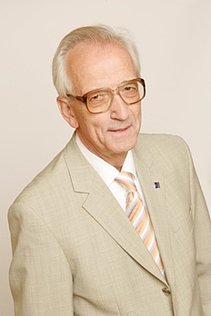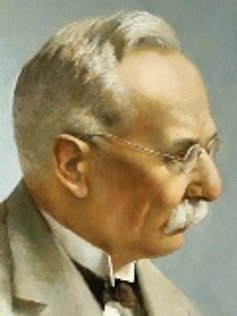Guntis Bērziņš (1938) was born in Riga. In 1944, his parents – mother Lūcija Felsberga-Bērziņa, who started her career at the University of Latvia as a young assistant professor of English philology, and father Arvīds Bērziņš, who studied economics at the University of Latvia and worked as an accountant – decided to flee Soviet occupation to Germany.
G. Bērziņš spent a few years with his family in refugee camps near Hannover and Hamburg, afterwards his mother taught English at the Baltic University in Pineberg, while Guntis Bērziņš went to a Latvian elementary school.
In 1949, the family emigrated to Australia, where mother worked as an English teacher and father was employed as an accountant.
Guntis Bērziņš graduated from elementary and secondary school in Australia and in 1960 received his first degree in electroengineering, specialising in telecommunications from the University of New South Wales. In 1966, he received a master's degree in engineering.
For 20 years, he worked at a state-owned company dedicated to maintaining and improving communication between Australia and abroad. He was the responsible engineer at the Foreign Telecommunications Commission. During this time of rapid development of telecommunications, he worked on the latest projects.
Guntis Bērziņš and his wife Laima met in Sydney, where they both lived. Like many Latvians in exile, they attended Latvian events and sent their children to Saturday school. The language spoken in the Bērziņš family was Latvian.
The family gradually began to long for Europe, and when the job offer in London came, they decided to move there. G. Bērziņš continued active participation in the life of Latvian exiles.
Guntis Bērziņš was involved in national political work. During the Awakening he worked in the Latvian National Council. When Latvia regained its independence, he moved back here with his family in 1993.
Here he worked as director of the Communications Department at the Ministry of Transport and as a state commissioner. He became one of the directors of Lattelecom Supervisory Board and worked there until 2001. After that he became a politician – he was a member of the 8th and 9th Saeima.
Currently a member of the student corporation Fraternitas Cursica, member of the board of the honorary members of fraternity.
Guntis Bērziņš founded the Professor E. Felsbergs Memorial Scholarship in 1999 to be awarded to outstanding, academically and socially active students from the faculties of humanities – to students acquiring the knowledge of the field represented by Professor Felsbergs.
Life and work of Professor Ernests Felsbergs
Ernests Felsbergs (1866–1928) – tutor, teacher of the parish, studied classical philology at the University of Tartu, working as a private tutor in the summers.
In 1897, Ernests Felsbergsbecame actively involved in the life of the Latvian student corporation Lettonia in Tartu. After graduating from the university in 1901, he was seconded to the University of St. Petersburg for a further two years of studies in specialization.
In 1909, E. Felsbergs married Gertrude Coates, a citizen of United Kingdom, and they soon had three children, daughter Lūcija, and sons Alberts, Aleksandrs.
In 1910, he defended his dissertation dedicated to brothers Gracchus, and was elected professor of philology and classical archaeology at the university and became the director of the university's museum of art.
The professor stayed in Tartu until February 1918, when the university was closed due to the German occupation of Estonian territory. Felsbergs moved to Voronezh, where he was elected professor of art history and theory at the local university and for some time was the head of the art department at the province’s museum. He remained in these positions until the spring of 1920, when he began attempts to return to his homeland. It succeeded on 17 August 1920, as he himself wrote, "after a three-month adventure-filled journey".
After the World War I, he came to Latvia as a scientist and lecturer, was the first Rector of the University of Latvia from 1922 to 1923. Felsbergs lectured on classical philology, Greek history, antique cultural and art history. He also founded the UL Art History Cabinet, which contained collections of valuable antique art and culture specimens, as well as literature thereof, and the most extensive collection of images and slides characterising antique culture at that time. He has also been a Member of the Saeima and Minister of Education.
Support
The scholarship is awarded to the University of Latvia students of humanities who achieve very good, excellent or outstanding results. The purpose of the scholarship is to support capable and hard-working UL students during their studies.
The scholarship was first awarded in the academic year 1999/2000 to Dens Dimiņš (EUR 700);
In the 2000/2001 academic year, scholarship was awarded to Linda Pilāne (EUR 700);
In the 2001/2002 academic year – to Kristīne Ante (EUR 700);
In 2018, EUR 6 000 were donated to the scholarship fund. At the initiative of the patron, donations were made to the scholarship fund for his 80th birthday, raising EUR 4 135 from more than 50 donors.
In 2013, together with his wife Laima Bērziņa, he individually supported the restoration of the University of Latvia Great Hall organ.
We greatly appreciate the generous support to education!

 Academic Centre
Academic Centre
